Leeward Islands


The Leeward Islands /ˈliːwərd/ are a group of islands in the West Indies. In English, the term refers to the northern islands of the Lesser Antilles chain. As a group they start east of Puerto Rico and reach southward to Dominica. They are situated where the northeastern Caribbean Sea meets the western Atlantic Ocean. The more southerly part of the Lesser Antilles chain are called the Windward Islands.
Origin of the name
The name of this island group, Leeward Islands, dates from previous centuries, when sailing ships were the sole form of transportation across the Atlantic Ocean. In the West Indies, the prevailing winds, known as the trade winds, blow from the northeast to the southwest. The early Spanish colonizers called Puerto Rico and the islands to the west Sotavento, meaning leeward. The islands to the south and east of Puerto Rico were then called Islas de Barlovento, meaning windward islands. When the British gained control of many of the Lesser Antilles, they designated Antigua, Montserrat, and the islands to the north "Leeward Islands". Dominica is the dividing line between the Windward and Leeward islands. Guadeloupe and the islands to the south were designated "Windward Islands". Later on, all islands north of Martinique became known as the Leeward Islands.[1] However, even in modern usage in languages other than English, e.g., Spanish, French and Dutch, all of the Lesser Antilles from the Virgin Islands to Trinidad and Tobago are known as the Windward Islands (Iles du Vent in French, Bovenwindse Eilanden in Dutch, and Islas de Barlovento in Spanish). The islands along the Venezuelan coast, known in English as the Leeward Antilles, in languages other than English are known as the Leeward Islands.
Geography
The islands are affected by active volcanism, and notable eruptions have occurred in Montserrat in the 1990s and in 2009 to 2010.
History
The Caribs, for whom the Caribbean is named, are believed to have migrated from the Orinoco River area in South America to settle in the Caribbean islands about 1200 AD, according to carbon dating. Over the century leading up to Columbus' arrival in the Caribbean archipelago in 1492, the Caribs mostly displaced the Maipurean-speaking Taínos, who settled the island chains earlier in history, by warfare, extermination and assimilation.[2]
The islands were among the first parts of the Americas to fall under the control of the Spanish Empire. European contact commenced with Christopher Columbus's second voyage, and many of the islands' names originate from this period, e.g., Montserrat was named in honour of Santa Maria de Montserrat (Our Lady of Montserrat), after the Blessed Virgin of the Monastery of Montserrat, which is located on the Mountain of Montserrat, the national shrine of Catalonia. 'Mont serrat' in Catalan means 'saw mountain', referring to the serrated appearance of the mountain range.
British colony of the Leeward Islands
The Leeward Islands became a British colony in 1671. In 1699, prior to the War of the Spanish Succession, Christopher Codrington became the governor of the Leeward Islands. The war lasted from 1701 to 1714. Daniel Parke II was the British governor of the Leeward Islands from 1706 to 1710. He was assassinated during a mutiny triggered by his self-enriching enforcement of Stuart imperialism.
Although comparatively much smaller than the surrounding islands in the Caribbean, the Leeward Islands posed the most significant (though decidedly less severe in comparison to the colonies) rebellion to the British Stamp Act.[3]
In 1816 the colony was dissolved, with its last governor being James Leith.
In 1833, the colony was reformed. From 1833 until 1871, the Governor of Antigua performed the duties of the Governor of the Leeward Islands.
Today the Islands are governed by a number of national and colonial administrations.
List of the Leeward Islands
From the northwest to the southeast, the islands are:
 Puerto Rican Virgin Islands: Vieques, Culebra (U.S.)
Puerto Rican Virgin Islands: Vieques, Culebra (U.S.)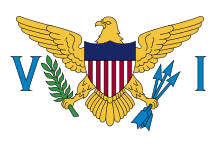 U.S. Virgin Islands: St. Thomas, St. John, St. Croix, Water Island (U.S.)
U.S. Virgin Islands: St. Thomas, St. John, St. Croix, Water Island (U.S.)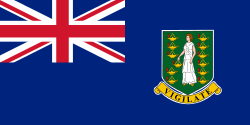 British Virgin Islands: Jost Van Dyke, Tortola, Virgin Gorda, Anegada (U.K.)
British Virgin Islands: Jost Van Dyke, Tortola, Virgin Gorda, Anegada (U.K.) Anguilla (U.K., under the British crown)
Anguilla (U.K., under the British crown)
 Saint Martin/Sint Maarten (Fr./Neth.)
Saint Martin/Sint Maarten (Fr./Neth.).svg.png) Saint-Barthélemy (Fr.)
Saint-Barthélemy (Fr.)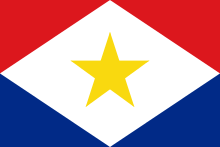 Saba (Neth.)
Saba (Neth.)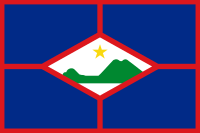 Sint Eustatius (Neth.)
Sint Eustatius (Neth.)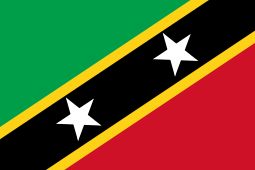 Saint Kitts (Commonwealth, forms a state under the British crown with Nevis; see Nevis)
Saint Kitts (Commonwealth, forms a state under the British crown with Nevis; see Nevis) Nevis (Commonwealth; see St. Kitts)
Nevis (Commonwealth; see St. Kitts)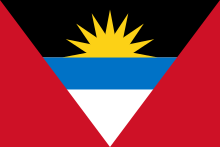 Barbuda (Commonwealth; see Antigua)
Barbuda (Commonwealth; see Antigua) Antigua (Commonwealth, forms a state under the British crown with Barbuda)
Antigua (Commonwealth, forms a state under the British crown with Barbuda) Redonda (uninhabited part of Antigua & Barbuda, cfr supra)
Redonda (uninhabited part of Antigua & Barbuda, cfr supra) Montserrat (U.K.)
Montserrat (U.K.).svg.png) Guadeloupe (Fr. overseas department)
Guadeloupe (Fr. overseas department).svg.png) la Désirade (dependency of Guadeloupe, Fr.)
la Désirade (dependency of Guadeloupe, Fr.).svg.png) Îles des Saintes (dependency of Guadeloupe, Fr.)
Îles des Saintes (dependency of Guadeloupe, Fr.).svg.png) Marie-Galante (dependency of Guadeloupe, Fr.)
Marie-Galante (dependency of Guadeloupe, Fr.)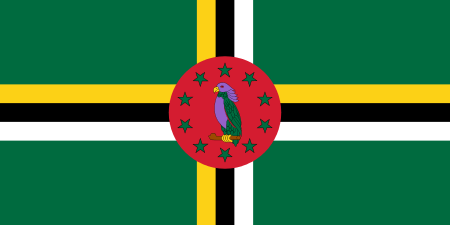 Dominica (Commonwealth; sometimes in- or excluded)
Dominica (Commonwealth; sometimes in- or excluded)
See also
References
- ↑ J. C. Hart and W. T. Stone (1982), A Cruising Guide to the Caribbean and the Bahamas, Dodd, Mead & Co., p. 601, ISBN 0-396-08023-5.
- ↑ Sweeney, James L. (2007). "Caribs, Maroons, Jacobins, Brigands, and Sugar Barons: The Last Stand of the Black Caribs on St. Vincent", African Diaspora Archaeology Network, March 2007, retrieved 26 April 2007.
- ↑ O'Shaughnessy, Andrew (April 1994). "The Stamp Act Crisis in the British Caribbean". The William and Mary Quarterly. 51: 203–226. doi:10.2307/2946860.
External links
- Digital Library of the Caribbean−dloc.org: "The Leeward Islands Gazette" — freely−openly available, with full page images and searchable text.
- Digital Library of the Caribbean−dloc.org: "Antigua, Montserrat and Virgin Islands Gazette" — openly−freely available, with searchable text and full page images.
| Wikimedia Commons has media related to Leeward Islands. |